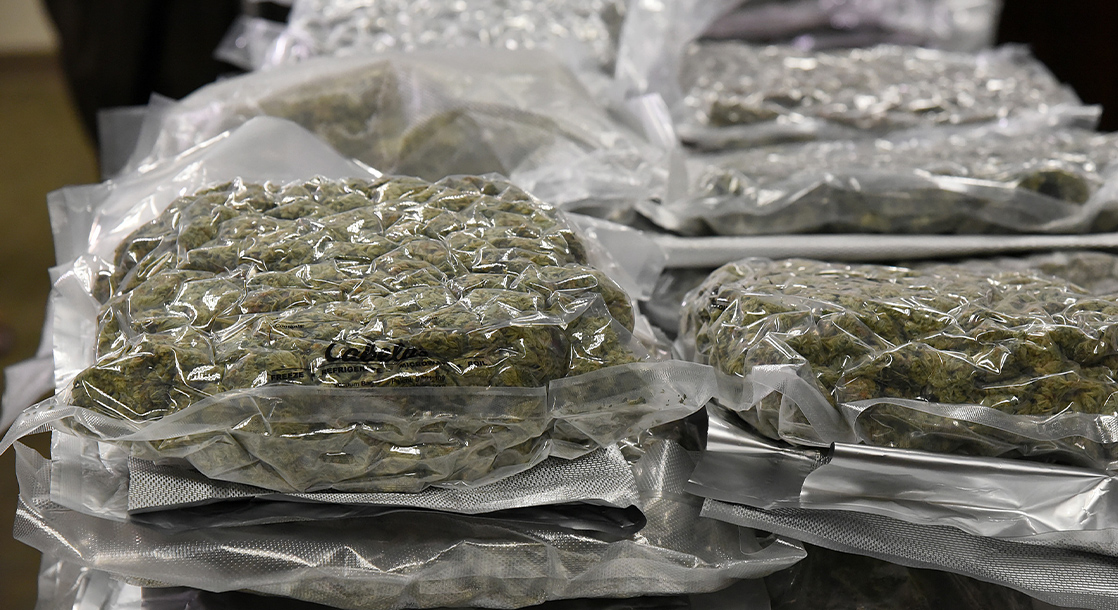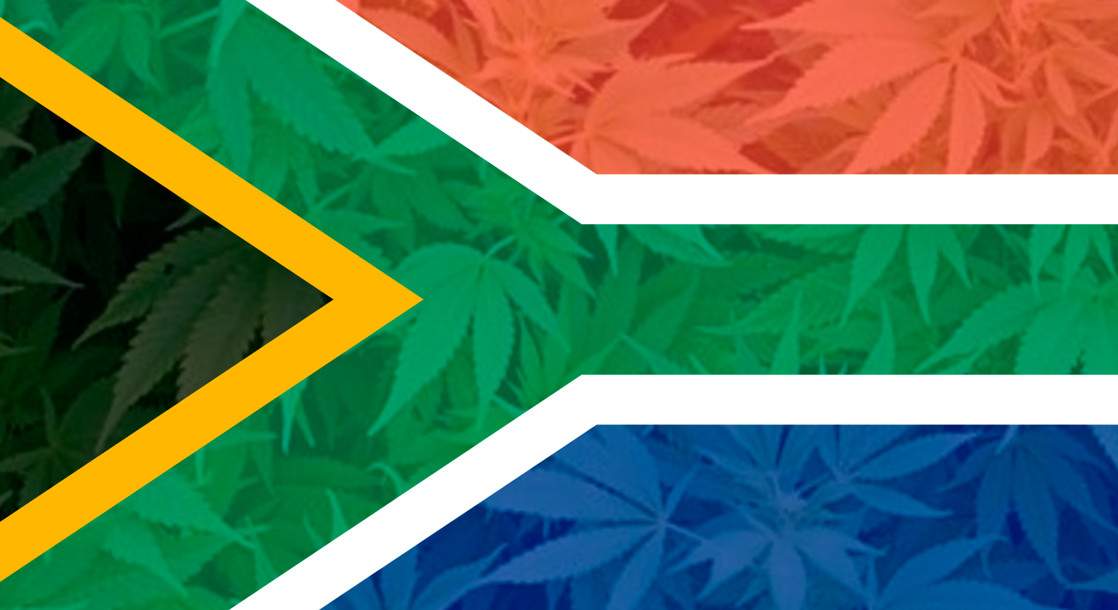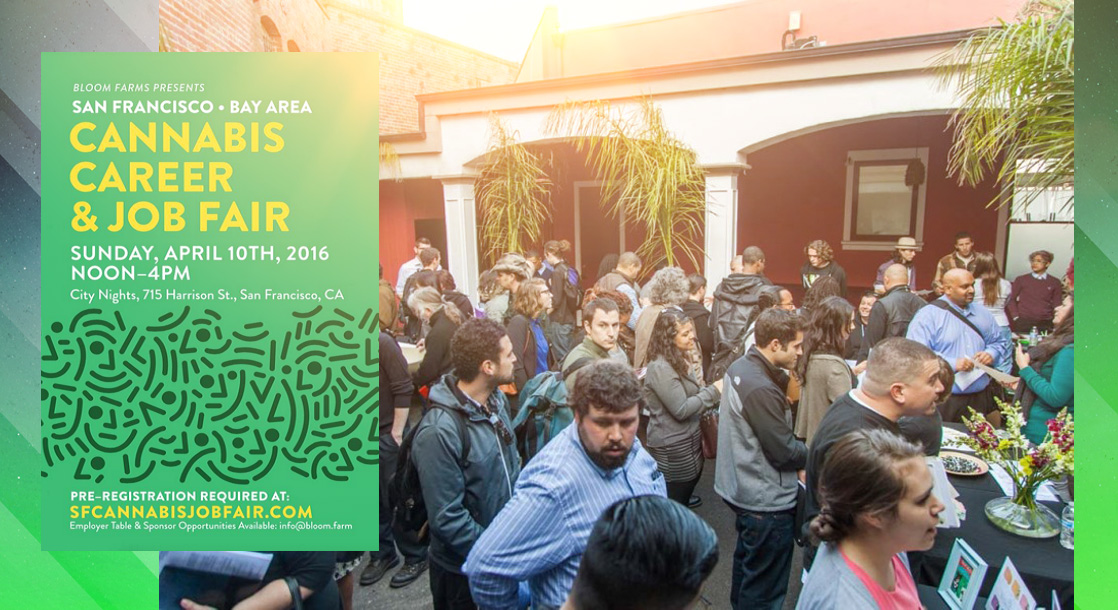For decades, the cannabis movement promised that if we legalized weed, we’d get rid of the black markets for it. Organized crime syndicates, street gangs, and shady basement dealers would go out of business if they had to compete with legal pot shops. Or so the logic went.
But that promise hasn’t materialized in California, which began recreational cannabis sales in 2018. In fact, analysts estimate that the illicit weed game generates three times the revenue as legal sales ($9 billion and $3 billion, respectively). Furthermore, there may be as much as three times more unlicensed pot shops in California than licensed ones (2,835 unlicensed versus 873 licensed ones, according to recent estimates). The problem has become so unmanageable that Governor Newsom ordered the state’s National Guard to aid local police during raids on black marketeers last summer. Then the state kicked off a public awareness campaign on billboards dubbed #WeedWise which encourages folks in California to buy only from the legal market.
Why is this black-market madness happening in California, but not in another weed-legal state, like Colorado? Cali is unlike other places with adult-use regulations. For starters, it’s the largest cannabis market in the US — if not the world. It’s also the birthplace of today’s legalization movement, as California approved the first medical marijuana program back in 1995. Ironically, it’s because of that rich, sordid history that the Golden State is in a royal mess today.

When California first approved medical marijuana, there was no business licensing system in place. Most medical weed was grown in private residences, then donated or sold untaxed to patients. In the years following 1995, the state enacted a new regulatory framework that eventually established business licenses for cannabis dispensaries, cultivators, manufacturers, and delivery services. Now, there are strict rules for everything from the widths of doorways to the heights of shelves at cannabis businesses, ultimately creating a series of hurdles that complicate things for cannabis entrepreneurs looking to sell through the recreational market. But the unlicensed (or “traditional”) market never went away. In fact, California’s black market flourished alongside medical and recreational legalization — and it still does to this day.
So, why is California’s black market currently soaring in sales while legal operators struggle month-to-month? Unfortunately, there’s no easy answer. It’s partially because a lot of people refuse to leave the traditional market, either due to loyalty for the old-school way of operating, or the insanely high price of getting licensed in the legal weed game. Startup costs for a new cannabis business can easily reach into the millions, a consequence of attorneys’ fees, annual licensing fees, high rents, and the astronomical prices of manufacturing equipment, for starters. And all of these costs lead to additional expenses for the consumer, who has to make up for the differences in operating costs. In contrast, the black market doesn’t have to deal with these same expenses, hence why unlicensed weed can be sold much cheaper than the legal stuff.
How do those extraneous business expenses translate on the consumer end? To give you an idea of the price differences between states with legal markets, let’s take a look at Colorado. You can buy an ounce of legal cannabis in the Centennial State for as low as $80, with tax included. But depending on where you are in California, an ounce can sell for as high as $400 – before tax.
Gallery — Fuck Tons of Weed That No One Is Smoking Except Cops:
So, that brings us to the next question: Why is Cali’s weed so expensive? Taxes are a big part of it. The state taxes legal weed at nearly every step of the seed-to-sale process, from planting seeds to cultivating mature plants to the final sale at the cash register. Depending on the context, the tiered tax system for Cali’s legal weed can reach as high as 30 to 50 percent, when taken altogether.
But taxes alone don’t explain the bloated prices. There are a bunch of other overhead costs to consider. For instance, all licensed cannabis companies must regularly send their products for lab testing, also dictated by state law. Each test can run over $1,000 a pop, and when you account for some companies producing and processing hundreds — if not thousands — of batches per financial quarter, that’s a lot of additional overhead. (Though, admittedly, this is probably one regulatory cost that the industry and its customers can get behind — especially after the recent vaping ordeal.)
Then there are all the other factors affecting price points, like the fact that new regulations have, in the very recent past, forced the industry to destroy (or divert onto the black markets, ironically) an estimated $350 million worth of previously compliant products. Not to mention that no licensed pot company — anywhere in the US — can make standard business deductions on their tax returns. In other words, they pay in full for all overhead costs. They can’t deduct employee payroll (the largest expense at any company), cost of supplies or equipment, licensing fees, or fees paid out to attorneys, accountants, or consultants. No other business in the US suffers from that kind of financial handicap.
Taken altogether, these factors mean Cali’s cannabis operators are constantly hit with big expenses, and those losses get passed onto the customers. After all, why drop $300 on an ounce when you can get weed of equal quality on the black market for half the price? And sure, legal weed is lab tested for quality, potency, and safety, whereas black market weed could contain anything from carcinogenic pesticides to human poo. But if you know that your guy who grows in his basement has super clean weed, why sweat it?
At the moment, it may look like California’s legal weed industry was doomed from inception. But there may be a solution in sight, and it boils down to simple economics.
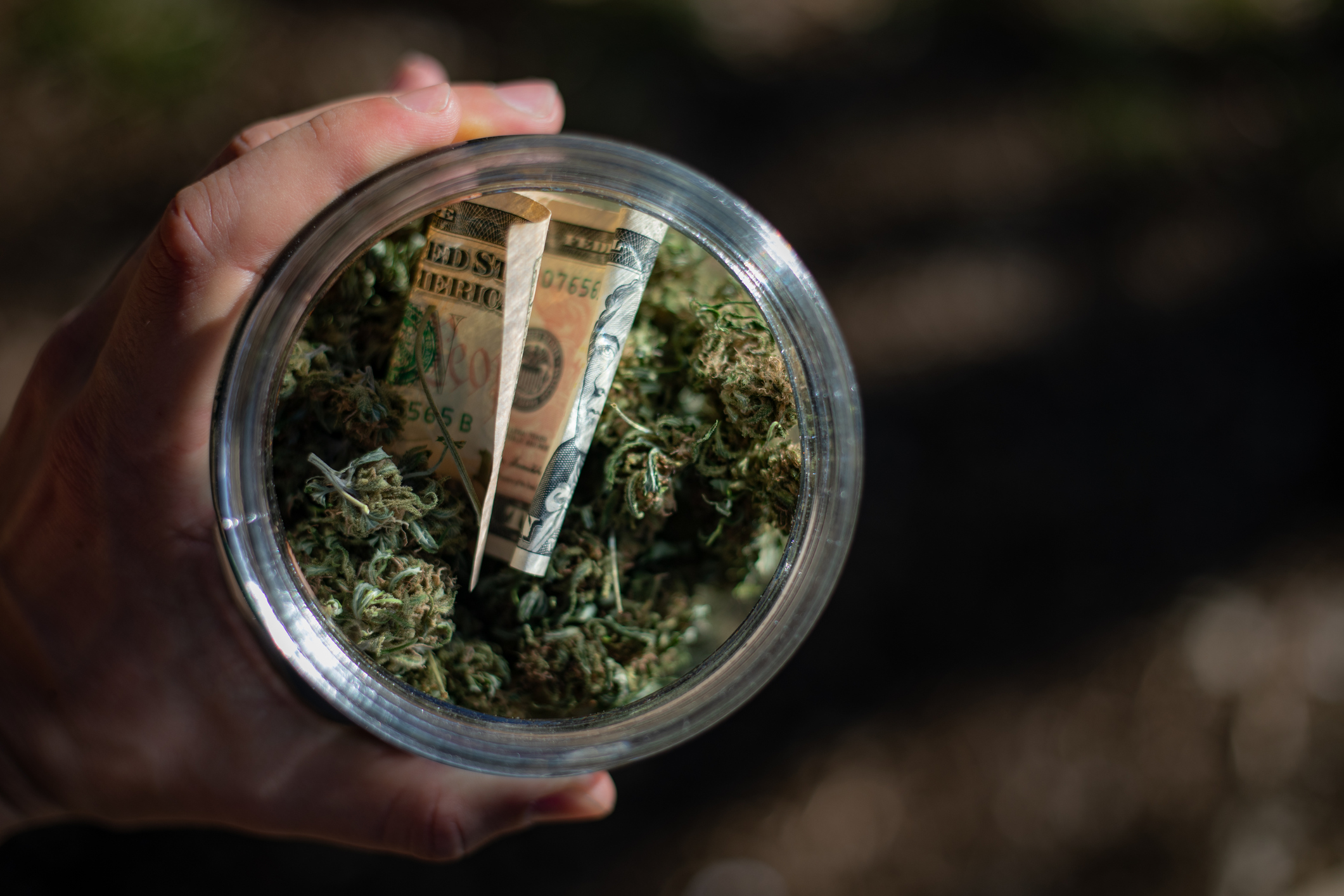
Legal California cannabis companies are starting to offer products at significantly lower prices than the state’s current (legal market) averages. Although these “discounted” products aren’t competing on a totally even playing field with black marketeers, licensed companies expect that their lower price points will encourage more customers to ditch the unregulated space.
“Sometimes, people are forced to choose between safe products and products they can afford,” said Ted Lichtenberger, the co-founder of Flower Co. cannabis delivery service. “We’re offering affordability to pull people from the illicit market into the legal one.”
Described as the “Costco of Cannabis,” Flower Co. sells weed only as quarter-ounces or more, and only by delivery. Any adult age 21 or over can buy from Flower Co., but exclusive members who pay an annual fee of $119 can get up to 40 percent off. While that membership fee may seem steep at first glance, think about how 40-percent price slices adds up for the consumer. For instance, if Flower Co.’s Forbidden Fruit strain usually sells for $192 an ounce, members can get that same ounce for just $142. After the first three one-ounce purchases, the company’s membership fee basically pays for itself.
Tech-savvy potheads may also want to look into Splitbud, a company that offers regular delivery-only deals on legal weed. Splitbud is partnered with two dispensaries in the LA area, though its operations are expanding.
“The way the California market has been going, there’s a need for selling cannabis in an affordable manner,” said Splitbud’s Director of Communications, Alice Moon. She explained that Splitbud’s discounts can reach up to 65 percent, with some buds selling for about $50 a quarter ounce, which is closer to Colorado’s pricing than much of California’s. And though the company’s main focus is on flower, they also offer discounts for other weed products like edibles. However, like Flower Co., to get the discount, you’ll need to buy in bulk of at least one quarter ounce or more.
The above mentioned businesses have all slashed their prices by selling cannabis in quarter ounces or greater amounts. This is how wholesale and bulk purchases work, even in underground markets: The more you buy at once, the more you save.
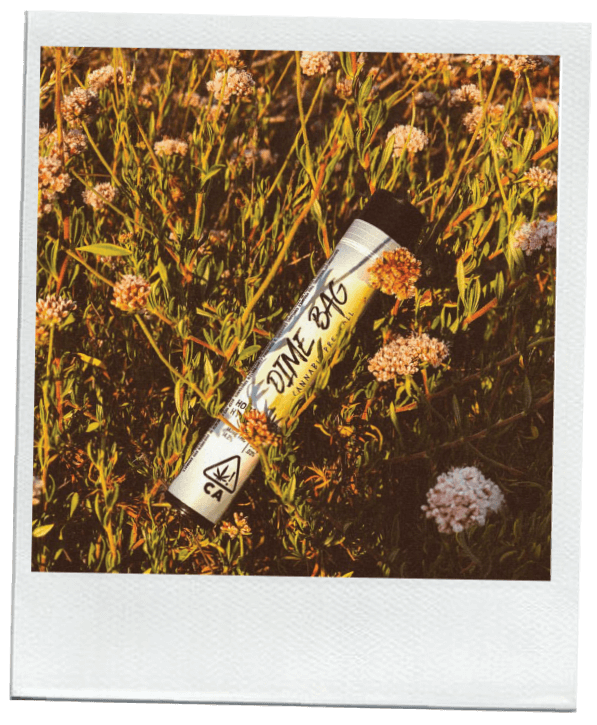
But what if you don’t want to drop $70 on a full quarter or half-ounce of weed? What if you just want a gram of dabs to hold you over for the weekend, or you’ve only got enough in the bank to purchase a single joint’s worth of herb? Loudpack Farms, and its discount-weed brand Dime Bag, has your back.
Dime Bag is branded as an affordable cannabis product line offered by the gram rather than the quarter or ounce. Although the company wouldn’t reveal exactly how it keeps costs low, a Loudpack representative said the company’s vertical integration model contributes to its pricing structure.
Vertical integration is a common concept in business, and legal cannabis has cashed in on it, too. Vertical integration means the business handles its product production, distribution, quality control, and sales all in-house. So, Loudpack grows its own weed; processes some of it for extracts, vapes, and edibles; and then sells it through its own distribution network. There are no middle men or brokers skimming fees or adding additional costs.
According to Danny Corral, the vice president of sales at Loudpack, selling cannabis by the gram appeals to every demographic, not just the casual or lightweight weekend toker. “What’s great about Dime Bag is that baby boomers, who are the fastest-growing demographic of cannabis consumers, identify and understand what a ‘dime bag’ is and can enjoy the nostalgia of their era,” he wrote to MERRY JANE in an email. “While at the same time, Dime Bag products are also enjoyed by millennials and everyone in between.”
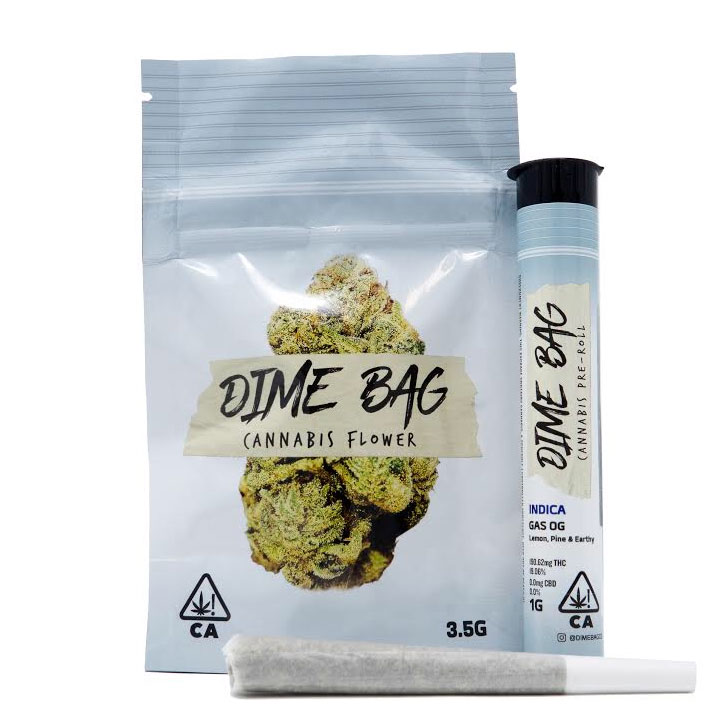
Despite the various approaches to lower cannabis pricing in California, trying to further reduce costs under the current regulatory scheme will prove incredibly difficult. Just minimizing overhead can’t solve California’s black market problem. The issue is systemic, and it’s built directly into the tax structures for the state’s legal weed.
“In 2018, when the market was super-volatile, I was working for one of my distribution partners,” said Kyle Walton, the founder of the skater brand Devil’s Lettuce, to MERRY JANE in an email. “I purchased a pound of flower, a mix of trim and small buds, for $100 and ended up paying a $148 per-pound tax on that same pound.”
That means he’d been charged a whopping 148 percent tax, which is unheard of in any other industry in the US.
“If the people in charge want to find the sweet spot where everyone wants to get into the legal market, then it has to be taxed fairly,” he added.
Devil’s Lettuce is one California-based outfit that provides discounted weed. The brand is by pro-skaters, for skaters. And it offers other accessories like clothing, too. To keep costs down, Devil’s Lettuce only offers its weed in half-ounce sacks for about $70 on average. The weed also comes in a plain plastic ziplock bag, just like it was done in the days of prohibition.
How could California continue to adjust is regulations in order to lower costs for both entrepreneurs and consumers? One lobbyist, who has worked closely with California’s regulators both inside and outside of the cannabis industry, suggested that state officials should take a three-pronged approach to price-points and outcompeting the black market: Slash the tiered tax rates, ramp up counter-drug law enforcement, and get more jurisdictions to issue more weed business licenses.
“We gotta give them a fighting chance,” said Adam Spiker, the executive director of the Southern California Coalition, referring to California’s legal operators. “I don’t know many licensed members who are doing well. In fact, most of them have either shut down and given up, or they’re taking out high interest loans just to pay the bills.”
Spiker said that a “significant tax relief bill” is required to fix the taxation issue, but even that won’t be enough. Earlier this year, the legislature introduced Assembly Bill 286, the Temporary Cannabis Tax Relief bill, which would drop the excise tax on weed from 15 to 11 percent. Cultivation taxes would temporarily be suspended as well, but the bill’s provisions expire in 2022, just two years after the relief would go into effect. It would require another time-consuming, painstaking legislative process to extend the bill or make it permanent. But even if AB 286 alleviates some of the industry’s (and state’s) current black market woes, just slashing taxes may end up serving as a mere band-aid over a fresh gunshot wound.

Since nearly 80 percent of California’s jurisdictions have banned, or “opted-out” of allowing recreational pot shops in their areas, a lot of Californians have to drive hours out of the way just to reach a dispensary. Given that California has some of the highest gas prices in the country, it’s much easier — and a lot cheaper — for consumers in these opted-out districts to just buy their weed off the street.
Furthermore, both Spiker and Corral at Loudpack said the state’s law enforcement efforts against black marketeers needed “more teeth.” Although state counter-drug operations for illegal pot farms and storefronts got a lot of media fanfare earlier this year, neither individual was convinced that the state has actually done much besides posture for the press. Spiker described California’s law enforcement against illicit pot shops as “whack-a-mole.” So, when the state or city authorities shut down one shop, another pops up just as fast.
“I don’t think it’s been taken seriously enough,” Spiker continued. “A lot of regulators have been talking about the need for more enforcement, but it’s not been happening quick enough. There needs to more deterrence in the enforcement,” such as prosecuting landlords who own the buildings used to front illicit pot shops, “but it’s going to be hard to stop them all.”
For now, figuring out creative and novel ways to reduce overhead costs may be the cannabis industry’s only avenue for competing with the black market. Discounting commercial cannabis could act as an excellent way to convert customers on the unlicensed markets into the regulated one, but it’s a temporary solution. The industry is essentially fighting with both arms tied behind its back while its body is tied to a chair. In order for the legal markets to truly compete with the black market, legal weed must match or beat the prices offered on the streets. And that will never happen until California’s government revises its rules and starts treating legal cannabis like any other industry, rather than as some dangerous, stigmatized vice that must bribe its way into legitimacy.
Follow Randy Robinson on Twitter


